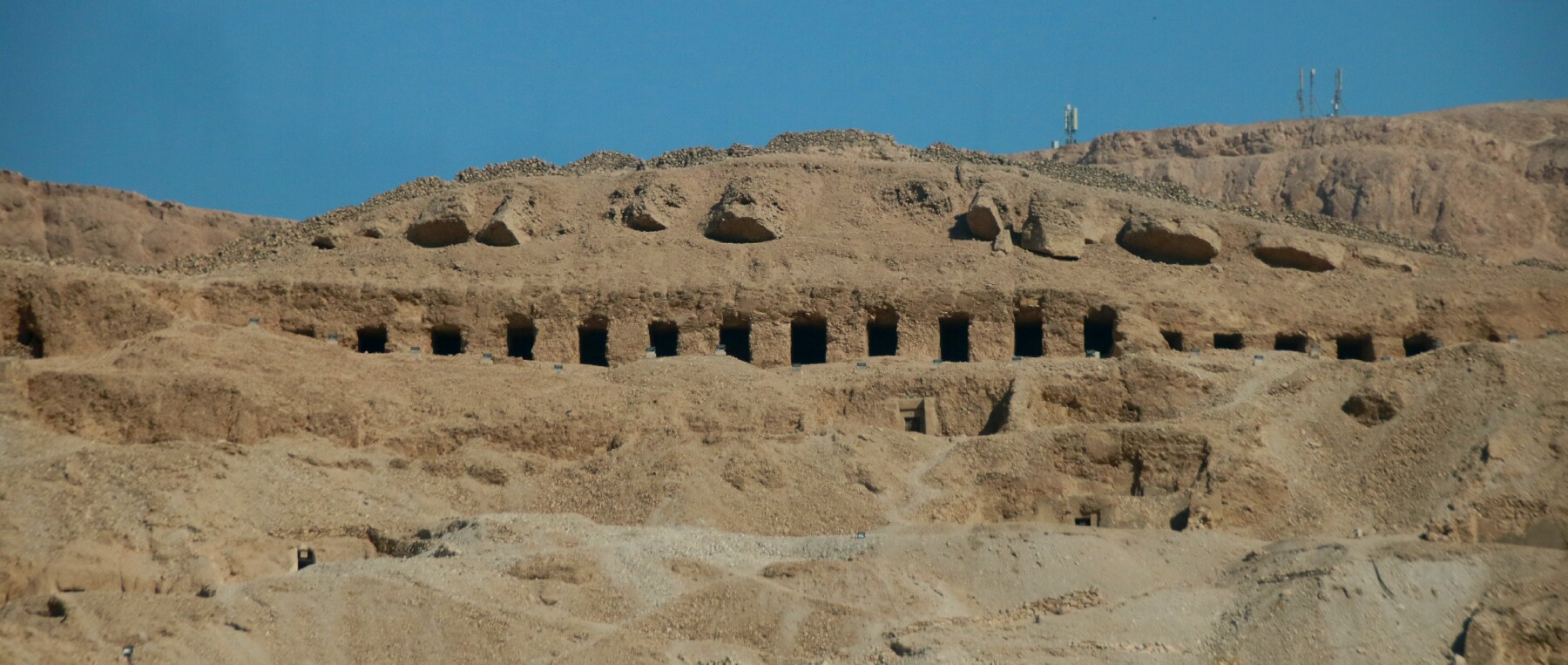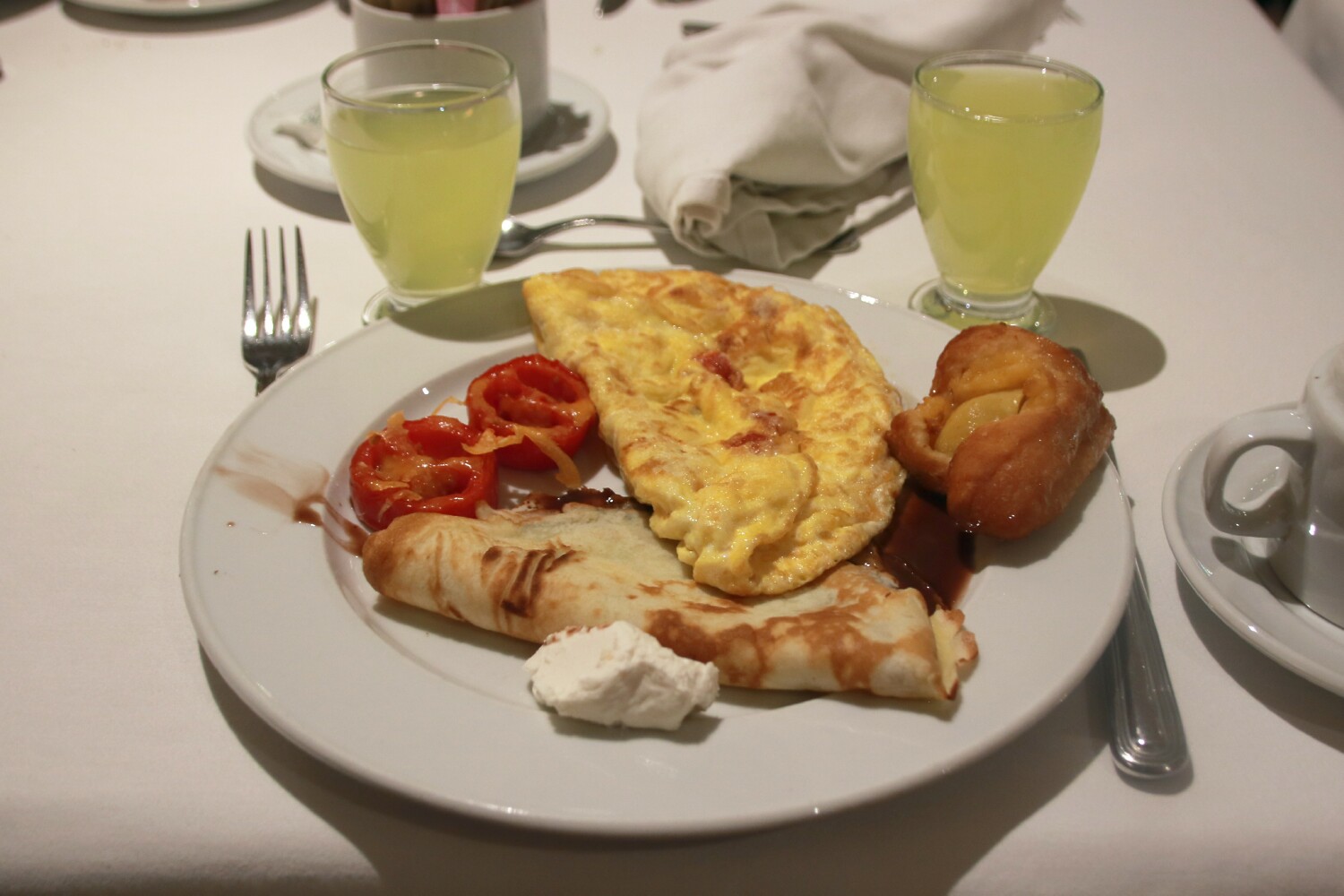Egypt: Day 7
September 22, 2022
|
After returning to the cruise ship after the Air Balloon ride, and a good breakfast, we set out for the Valley of the Kings. For a period of nearly 500 years from the
16th to 11th century BC, rock-cut tombs were excavated for the Pharaohs and powerful Egyptian nobles. There are currently 65 numbered tombs in the valley and up in the mountains nearby,
the last one discovered in 2012. Each day, 8 tombs are open to visit for the price of admission, and each visitor can visit 3 of those tombs. Upon recommendation from Ahmed,
we visited Ramesses I, Ramesses III and Ramesses IX. Other tombs are visitable with an extra ticket price ... Seti I, the longest and best of the extras, at an additional price of about $50 U.S.
After the Valley of the Kings, we drove just a little south in the Thebes Mountains to get to the Temple of Hatshepsut. She is the second confirmed female Pharaoh, who ruled alongside
her at-first 2 year-old stepson Thutmose III from 1479-1458 BC. Hatshepsut
Next, we did a brief stop at Memphis Alabaster to see artisans creating and carving alabaster, soapstone and other materials, all available for purchase, naturally. Then we drove
to the Nile River, took a boat across and had lunch.
|

Above: Tombs are not just for the Pharaoahs and their friends ... tombs were created for selected workers, who were not slaves, but skilled artisans who painted,
carved and created the tombs.
1 is breakfast after the Air Balloon ride.
2 and 3 shows a gas station and Spongebob clothing store, not the first seen in Luxor.
4 is the old abandoned village of Qurna, which was abandoned in 1825, re-inhabited in the 1840's. To stop the looting the Department of Antiquities
expropriated the land on which the inhabitants lived and decided to move them to a new settlement. New Qurna was built in the 1940s and early 1950
to house the then residents who strongly resisted the move. New Qurna was closer to the Nile, used vegetation to moderate the hot temperatures,
but it was never completed, and all that remains today of the original New Qurna is the mosque, market and a few houses.
5 to 8 show views of the Worker's tombs, still being excavated by archeologists, with paintings at least equal to those in the Pharaohs' tombs.
9 to 12 show our bus entering the Valley of the Kings, the market with aggressive sellers before you can get into the tomb area and a fibreglass
recreation of the tombs showing on top where the tombs are located, and below how far the tombs go underground.
|

|
|